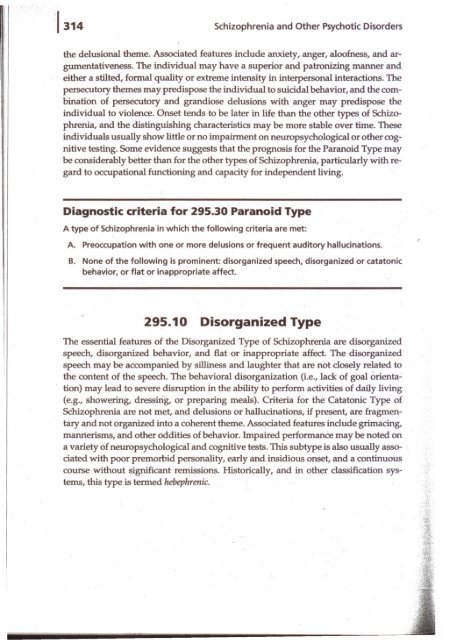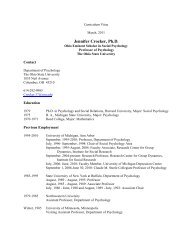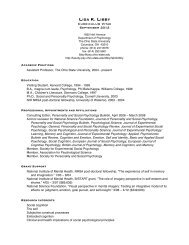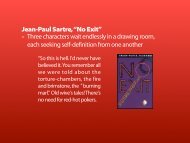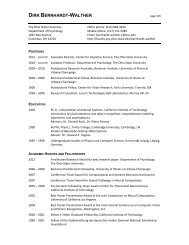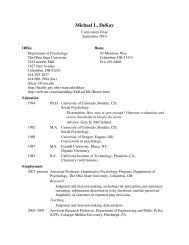Schizophrenia and Other Psychotic Disorders pg297-315.pdf
Schizophrenia and Other Psychotic Disorders pg297-315.pdf
Schizophrenia and Other Psychotic Disorders pg297-315.pdf
Create successful ePaper yourself
Turn your PDF publications into a flip-book with our unique Google optimized e-Paper software.
'1314 <strong>Schizophrenia</strong> <strong>and</strong> <strong>Other</strong> <strong>Psychotic</strong> <strong>Disorders</strong><br />
the delusional theme. Associated features include anxiety, anger, aloofness, <strong>and</strong> argumentativeness.<br />
The individual may have a superior <strong>and</strong> patronizing manner <strong>and</strong><br />
either a stilted~ formal quality or extreme intensity in interpersonal interactions. The<br />
persecutory themes may predispose the individual to suicidal behavior, <strong>and</strong> the combination<br />
of persecutory <strong>and</strong> gr<strong>and</strong>iose delusions with anger may predispose the<br />
individual to violence. Onset tends to be later in life than the other types of <strong>Schizophrenia</strong>,<br />
<strong>and</strong> the distinguishing characteristics may be more stable over time. These<br />
individuals usually show little or no impairment on neuropsychological or other cognitive<br />
testing. Some evidence suggests that the prognosis for the Paranoid Type may<br />
be considerably better than for the other types of <strong>Schizophrenia</strong>, particularly with regard<br />
to occupational functioning <strong>and</strong> capacity for independent living.<br />
Diagnostic criteria for 295.30 Paranoid Type<br />
A type of <strong>Schizophrenia</strong> in which the following criteria are met:<br />
A. Preoccupation with one or more delusions or frequent auditory hallucinations.<br />
B. None of the following is prominent: disorganized speech, disorganized or catatonic<br />
behavior, or flat or inappropriate affect .<br />
.295.10 Disorganized Type<br />
The essential features of the Disorganized Type of <strong>Schizophrenia</strong> are disorganized<br />
speech, disorganized behavior, <strong>and</strong> flat or inappropriate affect. The disorganized<br />
speech may be accompanied by silliness <strong>and</strong> laughter that are not closely related to<br />
the content of the speech. The behavioral disorganization (i.e., lack of goal orienta':;<br />
tion) may lead to severe disruption in the abilitY to perform activities of daily living<br />
(e.g., showering, dressing, or preparing meals). Criteria for the' Catatonic Type of<br />
<strong>Schizophrenia</strong> are not met, <strong>and</strong> delusions or hallucinations, if present, are fragmentary<br />
<strong>and</strong> not organized into a coherent theme. Associated features include grimacing,<br />
manrlerisms, <strong>and</strong> other oddities of behavior. Impaired performanCe may be noted on<br />
a variety of neUropsychological <strong>and</strong> cognitive tests. This subtype is also usuallyasso- .<br />
ciated with poor premorbid personality, early <strong>and</strong> insidious onset, <strong>and</strong> a continuous<br />
course without significant remissions. Historically, <strong>and</strong> in other classification systems,<br />
this type is termed hebephrenic. ,~,


